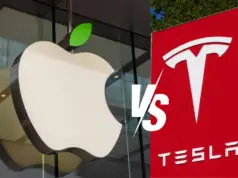Tesla coils have been used for a variety of purposes, from wireless communication to scientific research. They are also popular among hobbyists and enthusiasts who build their own coils.
However, sometimes things go wrong, and the coil fails to work.
In this article, we will explore some of the common reasons why your Tesla coil may not be working and how to troubleshoot and fix the problem.
1. Power Supply Issues
- Check the voltage of the power supply. Tesla coils require high voltage, typically in the range of several thousand volts.
- Check for any signs of damage, such as a blown fuse or a burnt-out transformer.
- Make sure all connections between the power supply and the coil are tight and secure.
2. Faulty Spark Gap
- The spark gap controls the flow of electricity and is responsible for creating high-frequency sparks.
- Check if the gap is properly aligned, and clean it with a wire brush to remove any dirt or debris.
- Check for any signs of damage, such as a broken electrode or a burnt-out gap.
3. Broken Capacitor
- The capacitor stores electrical energy and releases it in short bursts, creating characteristic sparks.
- Check for any signs of damage, such as a cracked or bulging capacitor.
- Make sure the capacitance value of the capacitor is within the range specified for your coil.
4. Faulty Primary or Secondary Coils
- The primary and secondary coils generate and amplify electrical energy.
- Check for any signs of damage, such as a cracked or burnt-out coil.
- Make sure the number of turns on both the primary and secondary coils is within the range specified for your coil.
5. Poor Grounding
- Proper grounding ensures that the electrical energy generated by the coil is safely discharged into the ground.
- Check all ground connections, making sure they are tight and secure.
- Use a low-impedance ground such as a ground rod or a grounding plate.
6. Interference
- Tesla coils generate high-frequency electrical energy, which can interfere with other electronic devices in the vicinity.
- Use shielded wires for all connections, and consider using a Faraday cage to reduce interference.
Conclusion By troubleshooting and fixing these common issues, you can get your Tesla coil up and running again. Here are some additional key points to keep in mind:
- Always prioritize safety when working with high-voltage electrical systems.
- Follow manufacturer instructions and guidelines.
- Consider consulting with an experienced electrician or engineer if you encounter complex issues.





